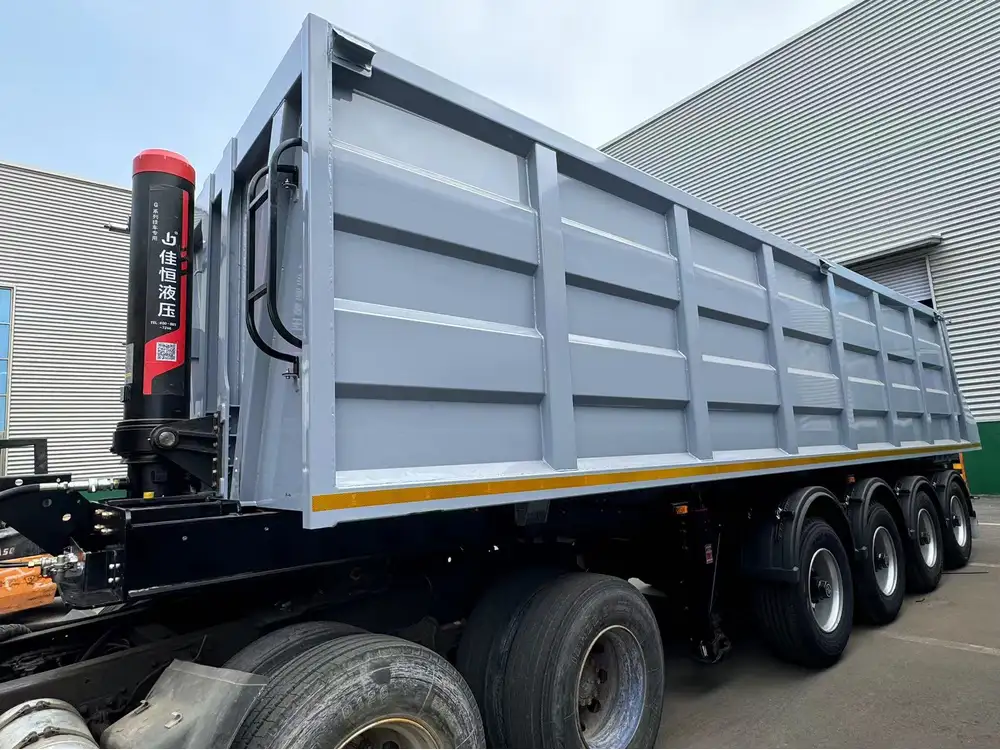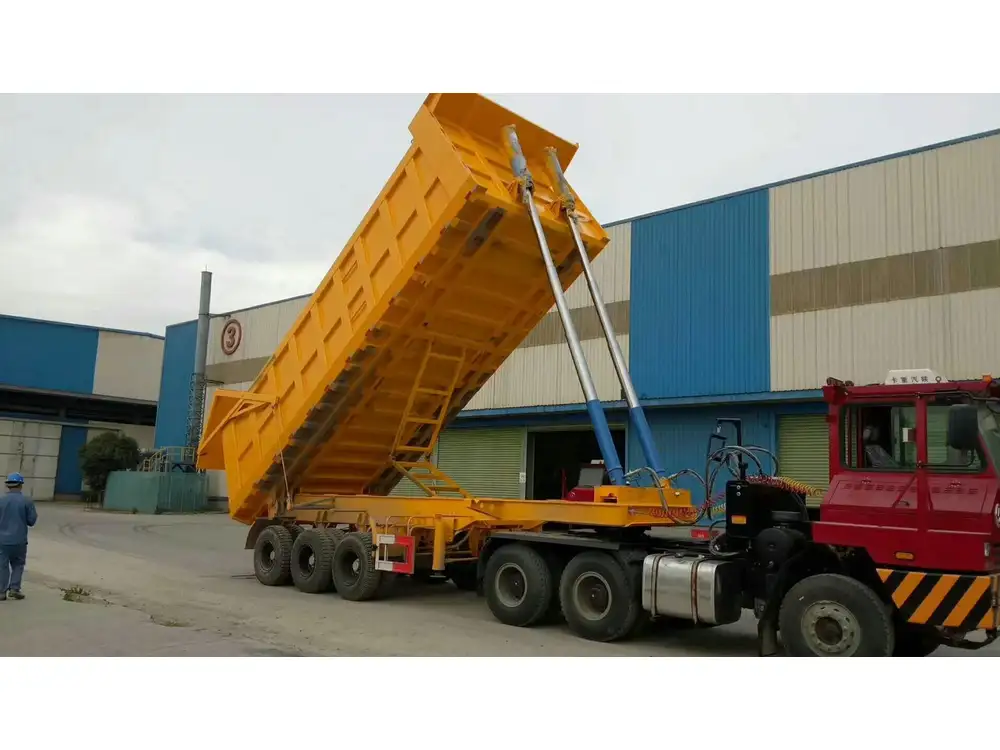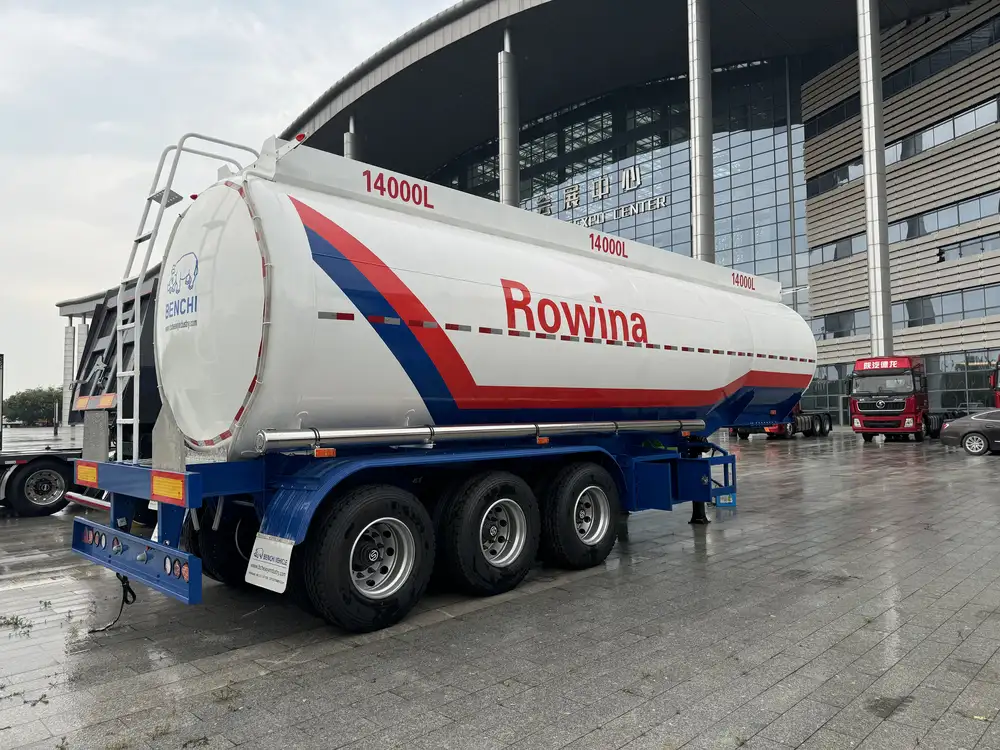When delving into the world of logistics and transportation, one increasingly significant question arises: how tall is a tractor trailer truck? The answer to this seemingly simple inquiry can unfold into a considerable amount of detail that spans specifications, industry norms, and local regulations. As manufacturers of semi-trailers, we recognize the necessity of understanding these dimensions for compliance, safety, and efficiency in operations. This article breaks down the complex factors affecting tractor trailer heights and provides essential insights tailored for fleet owners, operators, logistics managers, and those involved in trucking operations.
Overview of Tractor Trailer Dimensions
To grasp the full scope of tractor trailer heights, one must first comprehend the standard structure of a tractor trailer. Typically, a tractor consists of the cab—a component where the driver sits—and the trailer, which carries the cargo. The combined height often varies significantly based on configurations and payloads. Below are the average height dimensions you might expect:
| Component | Average Height |
|---|---|
| Standard Tractor | 13.5 to 14.5 feet |
| Standard Trailer | 13.5 to 14.0 feet |
| Total Height (Combined) | 13.5 to 14.5 feet |
Factors Influencing Height
Type of Load: Depending on whether the cargo is heavy equipment, containers, or bulk goods, the trailer’s height might adapt, impacting the total vehicle height.
Type of Trailer: Variants like lowboys, flatbeds, and refrigerated trailers could feature different heights meant to accommodate specific types of cargo more effectively.
Customization: Many companies opt for specialized trailers, such as those designed for oversized loads. Custom dimensions often lead to variations in height, sometimes altering standard compliance measures.
Regulatory Constraints: Local and federal regulations influence maximum allowable heights and may vary by state, especially when crossing state lines or entering specific zones.

Importance of Knowing the Height
Understanding the height of a tractor trailer truck bears significant implications for various elements of trucking operations:
Roadway Compliance: Overpasses, bridges, and tunnels often have height restrictions. Knowing your truck’s height is paramount to avoid costly accidents or delays.
Loading Docks: Not all loading docks accommodate high trailers; knowing dimensions aids in selecting compatible loading locations.
Zoning and Operations: Specific routes may have restrictions for larger vehicles; thus, height measurements are essential for strategic planning.
Maximum Height Regulations in the U.S.
The federal limit for tractor trailer heights is typically 13.5 feet. However, state regulations may adjust this, resulting in differing permissible heights across the nation. Here’s a breakdown of some relevant regulations:
| State | Maximum Height |
|---|---|
| Federal Government | 13.5 feet |
| California | 14.0 feet |
| Texas | 13.5 – 14.0 feet |
| New York | 13.6 feet |
It’s essential to review local laws as they can frequently change, and deviations may result in fines or operational disruptions.
Permits for Oversized Loads
Certain loads exceed standard heights and thus require special permits. Familiarity with the application process for these permits is vital for operators of heavy or specialized equipment. The process typically involves:
Pre-Application Assessments: Reviewing load specifications and ensuring the intended route accommodates the oversized trailer.
Documentation Submission: Providing details about the load’s dimensions, route, and duration of transportation to the relevant authorities.
Fees and Approval Times: Understanding that permit costs may vary significantly from one jurisdiction to another, so operators should budget accordingly.

Practical Implications in Transportation
Understanding height requirements stretches beyond legal compliance; it’s an essential aspect of operational efficiency. Below are several practical aspects where height knowledge plays a critical role:
Safety Considerations
Knowledge of tractor trailer heights is crucial in preventing accidents. Bridges and low overpasses pose continuous risks, particularly when drivers may operate under time constraints or during stressful conditions.
Tips for Enhancing Safety:
Use Tracking Technology: Real-time vehicle tracking systems can help dispatchers monitor heights against predetermined routes.
Driver Training: Regular safety training addressing height restrictions and device utilization for measuring loads can reduce mishaps.
Clear Communication: Both drivers and logistics managers should communicate effectively regarding any height-specific challenges on routes.

Cost Efficiency
Familiarity with trailer heights can also lead to cost savings in logistical planning. Trailers exceeding standard heights may incur additional fees for permits, detours, or route changes.
Cost-Saving Strategies:
| Strategy | Potential Savings |
|---|---|
| Route Planning | Reduce fuel consumption by avoiding detours that require height adjustments. |
| Load Optimization | Ensure average load heights to align with standard regulations, minimizing permit requests. |
Fleet Management
Fleet operators often utilize height data in managing trailer types in their operations. Regular height assessments allow fleets to ensure compatibility and readiness for various shipping requirements.

Conclusion
In conclusion, the question of “how tall is a tractor trailer truck?” opens a broader discussion about safety, compliance, and efficiency in the logistics industry. By effectively understanding the average heights—ranging from 13.5 to 14.5 feet for standard configurations—and the accompanying regulations, stakeholders can ensure their operations align with federal and state mandates while improving safety and cost-effectiveness.
The intricate tapestry of logistics is woven with details that may seem mundane but are critical to success. Rather than a simple measurement, the height of a tractor trailer is interlinked with compliance, safety, and operational efficiency—underscoring the complexity and necessity of thorough knowledge in the transportation industry.
Armed with this knowledge, industry professionals can navigate the logistical landscape more effectively, ensuring streamlined operations and enhanced safety on the roads. As the transportation sector continually evolves, staying informed and adaptable will remain paramount to success.



